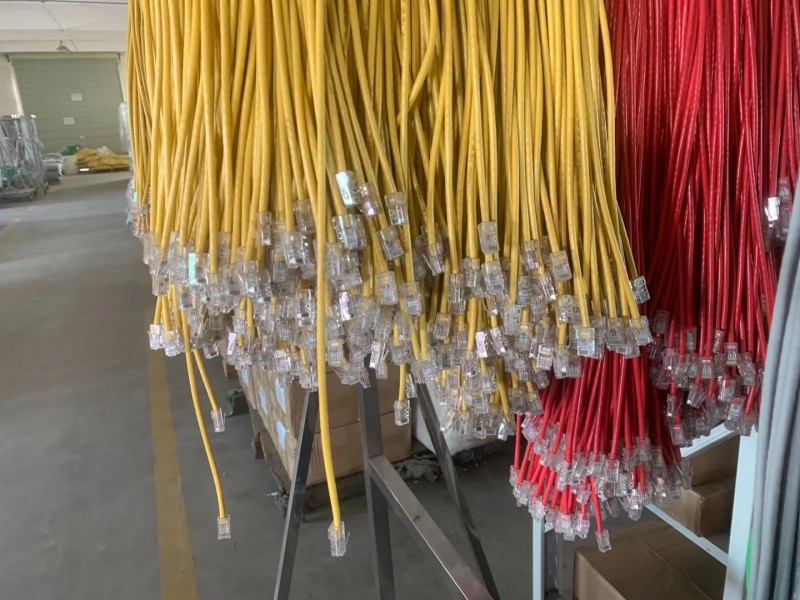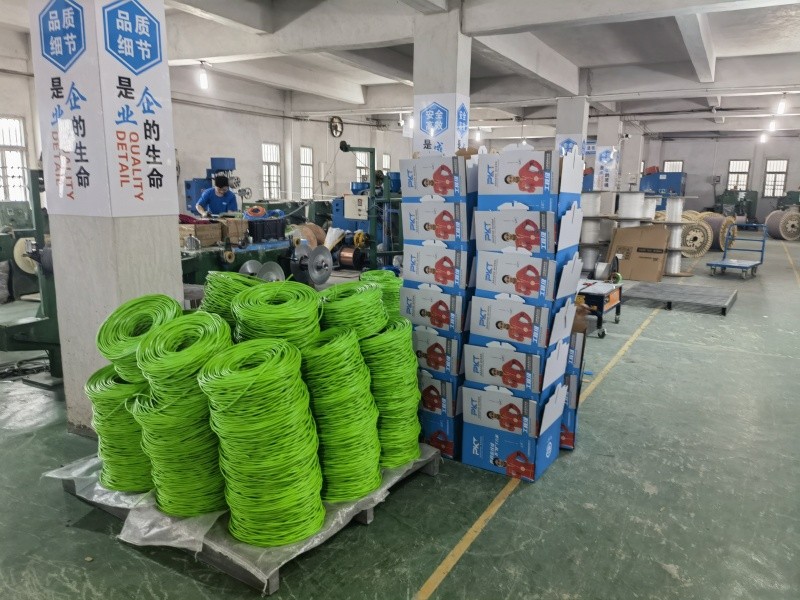Table of Contents
Understanding the Technology Behind Fibre Cable Internet
Fibre cable internet, also known as fibre optic internet, is a revolutionary technology that has transformed the way we access and use the internet. This technology uses thin strands of glass or plastic, known as fibre optic cables, to transmit data as pulses of light. The speed and efficiency of fibre cable internet are unparalleled, making it a preferred choice for many businesses and households.
The technology behind fibre cable internet is fascinating. Unlike traditional Copper cables that transmit electrical signals, fibre optic cables use light to carry information. This is achieved by using a process called total internal reflection. In this process, light is transmitted through the fibre optic cable by bouncing off the walls of the cable in a zig-zag pattern. This allows the light to travel great distances with minimal loss of signal strength.
The core of a fibre optic cable is made from a highly transparent material, usually glass or plastic, which is surrounded by a layer of material with a lower refractive index, known as the cladding. The difference in refractive index between the core and the cladding is what keeps the light trapped inside the core, allowing it to travel the length of the cable.

One of the key advantages of fibre cable internet is its speed. Fibre optic cables can transmit data at speeds of up to 100 gigabits per second, which is significantly faster than traditional copper cables. This high-speed data transmission makes fibre cable internet ideal for activities that require a lot of bandwidth, such as streaming high-definition video, online gaming, and video conferencing.
Another significant advantage of fibre cable internet is its reliability. Because fibre optic cables use light to transmit data, they are not affected by electromagnetic interference, which can cause data loss in copper cables. This means that fibre cable internet is less likely to experience disruptions or slowdowns, ensuring a consistent and reliable internet connection.
| No. | Products |
| 1 | rj45 wiring cable |
Furthermore, fibre optic cables have a much larger capacity for data transmission than copper cables. A single fibre optic cable can carry multiple signals at the same time, each at a different wavelength. This is known as wavelength-division multiplexing, and it allows fibre optic cables to carry a vast amount of data simultaneously, further enhancing their speed and efficiency.
Despite its many advantages, fibre cable internet does have some limitations. The main one is cost. Installing fibre optic cables can be expensive, particularly in rural or remote areas where the infrastructure may not already exist. However, as the technology continues to evolve and become more widespread, the cost of fibre cable internet is expected to decrease.
In conclusion, fibre cable internet is a powerful and efficient technology that offers numerous advantages over traditional copper cable internet. Its ability to transmit data at high speeds, its reliability, and its large capacity make it an excellent choice for both businesses and households. Despite its higher cost, the benefits of fibre cable internet are undeniable, making it a worthwhile investment for those seeking a fast, reliable, and efficient internet connection.
The Advantages and Disadvantages of Fibre Cable Internet
Fibre cable internet, also known as fibre optic internet, is a type of high-speed internet service that uses thin strands of glass to transmit information as pulses of light. This technology has revolutionized the way we access and use the internet, offering numerous advantages over traditional broadband connections. However, like any technology, it also has its drawbacks.
One of the most significant advantages of fibre cable internet is its speed. Fibre optic cables can transmit data at speeds of up to 1000 Mbps, which is significantly faster than traditional broadband connections. This makes fibre optic internet ideal for activities that require high bandwidth, such as streaming high-definition video, playing online games, and downloading large files.
Another advantage of fibre cable internet is its reliability. Unlike traditional broadband connections, which can be affected by weather conditions and other external factors, fibre optic cables are not susceptible to these issues. This means that fibre optic internet users can enjoy a stable and consistent internet connection, regardless of the weather or time of day.
Fibre cable internet also offers superior performance over long distances. While the signal strength of traditional broadband connections can degrade over long distances, fibre optic cables can transmit data over much longer distances without any loss of quality. This makes fibre optic internet a great choice for businesses and individuals in rural areas, where traditional broadband connections may not be available or reliable.
| Serial Number | Article Name |
| 1 | LSZH network cable |
Despite these advantages, there are also some disadvantages to fibre cable internet. One of the main drawbacks is the cost. Fibre optic internet is generally more expensive than traditional broadband connections, both in terms of installation and monthly service fees. This is because the technology is more complex and requires more expensive equipment and infrastructure.
Another disadvantage of fibre cable internet is its availability. While fibre optic technology is becoming more widespread, it is still not available in all areas. This is particularly true in rural areas, where the cost of installing fibre optic cables can be prohibitive.
Finally, the installation of fibre cable internet can be disruptive and time-consuming. Unlike traditional broadband connections, which can often be set up in a matter of hours, installing fibre optic cables can take several days and may require digging up roads and other public spaces.
In conclusion, fibre cable internet offers many advantages over traditional broadband connections, including faster speeds, greater reliability, and superior performance over long distances. However, it also has its disadvantages, including higher costs, limited availability, and potentially disruptive installation. Therefore, when considering whether to switch to fibre cable internet, it is important to weigh these pros and cons carefully. Despite its drawbacks, for many people and businesses, the benefits of fibre optic internet far outweigh the disadvantages, making it a worthwhile investment for a faster, more reliable internet connection.
How Fibre Cable Internet is Revolutionizing the Digital World
Fibre cable internet, a technological marvel, is revolutionizing the digital world. This cutting-edge technology is transforming the way we communicate, work, and entertain ourselves, offering unprecedented speed and reliability. The advent of fibre cable internet is a testament to the relentless pursuit of innovation and progress in the digital age.
Fibre cable internet, also known as fibre optic internet, is a type of broadband connection that uses thin strands of glass or plastic, known as fibre optics, to transmit information as pulses of light. This method of data transmission is significantly faster and more efficient than traditional copper wires, which transmit information as electrical signals. The speed and efficiency of fibre cable internet are its most distinguishing features, setting it apart from other forms of internet connectivity.
The speed of fibre cable internet is truly remarkable. It can deliver data at a speed of up to 1000 Megabits per second (Mbps), which is approximately 100 times faster than the average speed of a traditional broadband connection. This incredible speed allows for seamless streaming of high-definition videos, instantaneous downloading of large files, and lag-free online gaming. Moreover, fibre cable internet is not affected by the number of users or devices connected to the network, ensuring consistent speed and performance at all times.
The reliability of fibre cable internet is another significant advantage. Unlike copper wires, fibre optics are not susceptible to electromagnetic interference, which can cause data loss and connection disruptions. Furthermore, fibre optics are more durable and less likely to be damaged by environmental factors such as temperature fluctuations and moisture. This high level of reliability makes fibre cable internet an ideal choice for businesses and institutions that rely heavily on internet connectivity for their operations.

Fibre cable internet is also playing a crucial role in the development of smart cities. Smart cities use information and communication technologies to enhance the quality and performance of urban services, reduce costs and resource consumption, and improve the interaction between citizens and government. The high-speed and reliable connectivity provided by fibre cable internet enable the efficient functioning of various smart city applications such as intelligent traffic management systems, smart grids, and e-governance services.
In addition to its speed and reliability, fibre cable internet also offers superior Security. The data transmitted through fibre optics is extremely difficult to intercept, making fibre cable internet a secure option for transmitting sensitive information. This feature is particularly beneficial for businesses and institutions that handle confidential data.
Despite its numerous advantages, the adoption of fibre cable internet is not without challenges. The installation of fibre optic cables is a complex and costly process that requires significant investment. However, the long-term benefits of fibre cable internet, such as improved productivity and customer satisfaction, often outweigh the initial costs.
In conclusion, fibre cable internet is a transformative technology that is reshaping the digital landscape. Its unparalleled speed, reliability, and security are driving the digital revolution, enabling new ways of communication, work, and entertainment. As the digital world continues to evolve, fibre cable internet will undoubtedly play a pivotal role in shaping its future.
